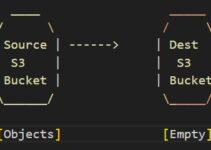In this article, you will know which all AWS services can be used in AWS Disaster Recovery and Fail-over.
Recovery time objective [RTO]
The acceptable amount of time it takes to restore the application to the business process service level.
Recovery Point Objective [RPO]
The acceptable amount of data that can be lost due to the failure as it is measured in time.
AWS Service that can be used for backup and disaster recovery:- [ AWS Disaster Recovery and Fail-over ]
- S3 (Simple Storage Service): lifecycle policies, versioning, MFA and eleven nines durability (99.9999999) make this a perfect backup solution.
- Glacier: It provider low-cost storage for long-term
- EBS:
- Durable point-in-time snapshot stored on the s3 standard storage type
- Ability to copy a snapshot to a new region and launch a new volume (good for preparing your disaster recovery methods)
- EBS Volumes are replicated across multiple servers in the same availability zone for durability
- AWS Import/Export:
- Copy a large amount of data to AWS to prepare for a disaster recovery solution
- Send physical storage devices for archival/storage as a backup solution.
- AWS Storage Gateway:
- Gateway-cached volumes
- Store the data on s3 with versioning enabled as a backup and cache frequently accessed objects on-premise
- Gateway-stored volumes
- Inexpensive offsite backups by creating point-in-time snapshots of data on the storage gateway to S3.
- Gateway-cached volumes
- EC2 (Elastic Cloud Compute):
- Copy ami’s to different AWS regions which can be spun up in the event of a disaster.
- Use multiple availability zones to design for fault-tolerance and failure
- Route 53 to failover to the backup environment in another region.
- Route 53:
- Can be used to failover from on-premise to AWS or from one AWS region to another
- Failover routing and weighted routing (for migrating applications)
- Allocate DNS ahead of time to prepare for potential failover
- ELB (Elastic Load Balancer):
- Pre-allocate the load balancer for the backup environment to receive the cname (DNS name) this allows for setting up Route53 recordset.
This is the end of the article, AWS Disaster Recovery and Fail-over.
thanks for reading this article, you’ll also like:
How to Mount S3 Bucket on Linux Instance
Oracle Database Security Tutorials
AWS Backup Strategies at Rest and in Transit









